|
|
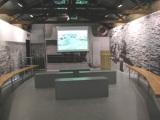 |
Atlit "Illegal" Immigrant Detention Camp - Mt. Carmel The Atlit Detention Camp aims to teach the history of the "illegal" immigration to Eretz Israel during the British Mandate (the Ha’apala). It enables the visitor to experience the trauma of the immigrants who were subjected to this form of imprisonment, so soon after their release from Nazi extermination camps. |
 |
The Ayalon Institute - Shfelat Yehuda The Ayalon Institute in the “Kibbutz Hill” –- once a training and instruction site for future kibbutz members (between 1932-1942), with a highly secret underground munitions factory, build for an armed struggle between Jews and Arabs in Israel (and neighboring Arab countries) - is now a fascinating open air museum |
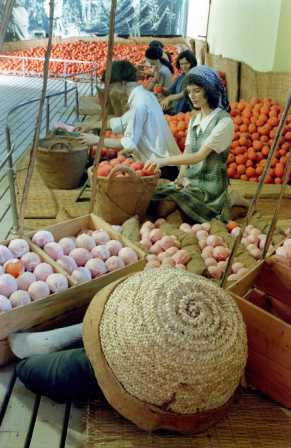 |
The Minkov Museum - Shfelat Yehuda Minkov’s orchard, with its ‘bayara’ (or farmyard and water well surrounded by a wall) was one of the first orchards to be planted in Eretz Israel in 1904. Located in Rehovot, it played an important role in the development of that town as Israel’s “citrus city”. The site aims to offer a light-hearted and humoristic, authentic illustration of the early days of citrus growing in Israel, based on accurate historical facts, atmosphere and décor as documented. |
|
| Nature Reserve |
| 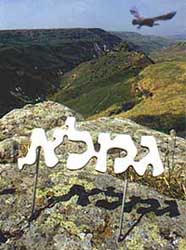 |
Gamla Nature Reserve - Golan Height Water falls, vultures' nests, Zealots, and one of the earliest synagogues in Israel The splendid landscape of Gamla Nature Reserve contains a host of animals and many well-preserved remnants of the past. The reserve boasts both a phenomenal concentration of birds of prey. |
|
| 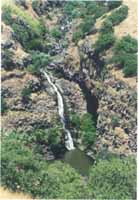 |
Yehudiya Forest Nature Reserve - Golan Height Rivers, natural pools, and waterfalls
The 16,500-acre reserve is shaped like an outstretched hand: the palm is Beit Zaida Valley, and each finger represents a river with rushing water and waterfalls. The reserve is 400 meters above sea level at its acme and gently slopes down its lowest point. |
| 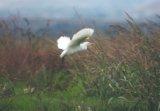 |
Hula Valley Nature Reserve - Upper Galilee A swamp that is home to tens of thousands of birds At one time, the Hula Valley was an important resting place for birds migrating from Europe to Africa and back. Tens of thousands of birds found refuge in the pond and swamps. In addition, many species of rare fish and plants lived here |
|
|
| 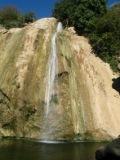 |
Nahal Ayoun Nature Reserve - Upper Galilee Waterfalls and flour mills
The sources of Nahal Ayoun are in Lebanon, about seven kilometers north of the town of Metulla. Nahal Ayoun begins in the Ayoun Valley in Lebanon and runs down into Israel, flowing between stone walls. |
|
|
| 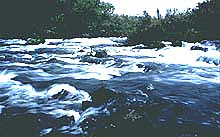 |
Tel Dan Nature Reserve - Upper Galilee Springs and a biblical-period city
Entering the Tel Dan Reserve is like stepping into a wonderland: scores of bubbling brooks feed into a running river and tall treetops reach for the sky, their leaves and branches keeping the ground shady and refreshingly cool, even at noon on a hot summer's day. |
| 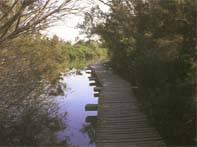 |
Ein Afek Nature Reserve - Lower Galilee Conserving the flora and fauna of the swamp
The Ein Afek Nature Reserve, on the outskirts of Kiryat Bialik, is the last vestige of the Nahal Na'aman swamps, which once extended all the way to the Acre valley. The Ein Afek Spring is in the nature reserve. A wooden path over the swamp passes near typical riverbank flora. |
| 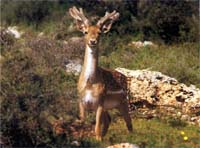 |
Carmel Hai-Bar (Wildlife Preserve) Nature Reserve - Mt. Carmel The Griffon vulture, the fallow deer and the roe deer return to the Carmel Mountain Range
By the turn of the twentieth century, many of larger animals who had once made their homes in Eretz Israel disappeared from the landscape, largely because of large-scale hunting. These animals had been an important link in the ecosystem |
|
| 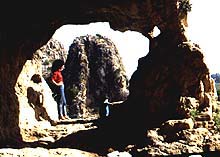 |
Nahal Me'arot Nature Reserve - Mt. Carmel 200 thousand years of uninterrupted human habitation
The southern bank of Nahal Me'arot lies on the lower reaches of the western part of the Carmel Mountain Range. Caves here contain evidence of inhabitation by prehistoric human beings. |
|
| 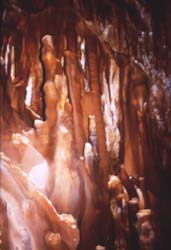 |
Stalactite Cave at the Avshalom Reserve - Shfelat-Yehuda Where the imagination runs riot
The Stalactite Cave Nature Reserve (also called Soreq Cave) is dedicated to the memory of Avshalom Shoham. The 82-meter-long, 60-meter-wide cave is on the western slopes of the Judean Hills outside the city of Beit Shemesh. |
| 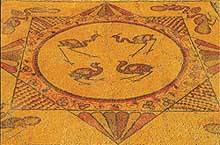 |
Ein Gedi Nature Reserve - Judean Desert & Dead Sea An oasis near the Dead Sea
The 6,250-acre Ein Gedi Nature Reserve sits along the Syrian-African Rift, not far from the Dead Sea. The reserve's four springs - David, Arugot, Shulamit, and Ein Gedi - are literally the wellspring for a wealth of flora and fauna |
| 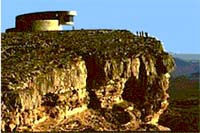 |
Ramon Park Complex - Central Negev Makhtesh Ramon: the story of the Negev Desert
Makhtesh Ramon is the ideal venue for the study of geology, even for those with little or no prior knowledge of the subject. The vigorous process of erosion, penetrated deep into the ground, creating a "window" into the layers of rock. |
|  |
Yotvata Hai-Bar (Wildlife Preserve) Nature Reserve - Arava A haven for animals long lost to Israel
The mission of Yotvata Hai-Bar (Wildlife Preserve) Nature Reserve is to establish reproduction groups for populations of wild animals that are mentioned in the Bible but have disappeared from our landscape, as well as for other endangered desert animals. |
|
|
| 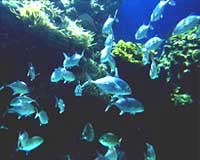 |
Coral Beach Nature Reserve - Eilat Underwater garden
Eilat Bay sits at the northern tip of a magnificent coral reef which straddles the equator. The clear, warm sea (at least 20 degrees centigrade) provides the ideal environment for the coral to build their homes. |
|
|
|
|
| 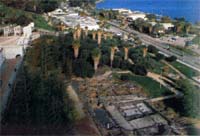 |
Hamat Tiberias National Park - Golan Height An ornate synagogue and ancient therapeutic baths
The seventeen springs of the city of Hamat Tiberias emanate from a source tens of meters underground. In ancient times, the springs were thought to have therapeutic and restorative powers. |
| 2.jpg) |
Hermon National Park (Banias) - Golan Height The largest waterfall in Israel and the remains of an ancient city
The Banias spring begins at the foot of Mount Hermon and its water rushes with great force through a canyon-like channel, losing 190 meters in altitude over the course of three and a half kilometers and forming the Banias waterfall, one of the most beautiful in Israel. |
| 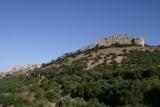 |
Nimrod Fortress National Park - Golan Height A vulture's nest and a breathtaking view
The Nimrod Fortress National Park grace the slopes of Israel's highest mountain, Mount Hermon, above the Banias spring. The fortress overlooks the forested dales and magnificent landscape of the area. |
| 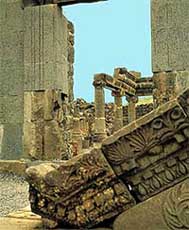 |
Corazim National Park - Sea of Galilee A Jewish city in a basalt landscape overlooking the Sea of GalileeThe city of Corazim was first mentioned during the Second Temple period, when it was famous for the high-quality wheat grown by its residents. Corazim flourished during the mishnaic and talmudic periods. |
| 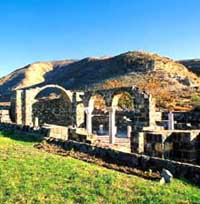 |
Kursi National Park - Sea of Galilee Remains of a large monastery commemorating the miracle of
Kursi is the Arabic name for the ruin on the eastern shores of the Sea of Galilee. During the mishnaic and talmudic periods this was a Jewish fishing village. |
| 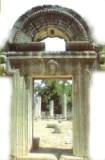 |
Baram National Park - Upper Galilee An ancient synagogue against a typical Galilee landscape The ancient synagogue of the village of Baram was constructed from large and particularly beautiful hewn stones. The size of the building is evidence that a highly successful Jewish community lived in this area during the fourth and fifth centuries. |
|
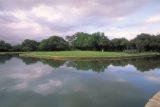 |
Hurshat Tal National Park - Upper Galilee Fun for the entire family
Hurshat Tal National Park, in the northern part of the Hula Valley, is the ideal place to spend a day or two or even three. The landscaped lawns and well-kept campground occupy 100 of the approximately 190 acres of the national park. |
|
| 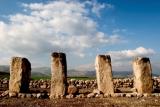 |
Tel Hazor National Park - Upper Galilee Capital of Canaanite Galilee Tel Hazor sits opposite Kibbutz Ayelet Hashahar on the Rosh Pina-Metulla road. Hazor flourished during the middle Canaanite period (ca. 1750 B.C.E.) and was the largest fortified area in Eretz Israel during the Israelite period (ninth century B.C.E.). |
| 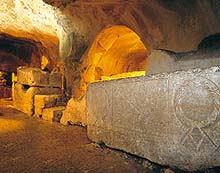 |
Beit She'arim National Park - Lower Galilee The most important burial place in the Jewish world during the mishnaic and talmudic periods
The ancient Jewish city of Beit She'arim is well worth a visit. Built on a low hill in the western part of the lower Galilee, Beit She'arim flourished from the second through the fourth centuries C.E. |
|
| 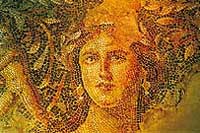 |
Zippori National Park - Lower Galilee A mishnaic-period city with an abundance of mosaics
Ancient Zippori - also known by its Greek name Sepphoris - is first mentioned in Josephus Flavius' description of the reign of Hasmonean king Alexander Jannaeus. A few decades hence, Zippori had become the most important city in the Galilee. |
|
| 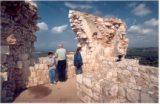 |
Yehiam Fortress National Park - Western Galilee Crusaders, Ottomans, and Israeli settlers Yehiam Fortress is located in Kibbutz Yehiam, in the western part of the Galilee. When the kibbutz was settled in 1946, its original residents lived in the fortress ruins. The massive walls protected them when they were under siege during the 1948 War of Independence. |
| 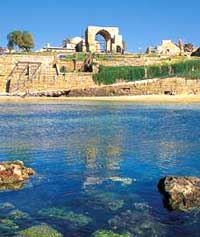 |
Ahziv National Park - Western Galilee The magnificent Mediterranean Sea
A myriad of options awaits visitors to the Ahziv National Park: a rocky embayed coast; lagoons; deep natural seawater pools; manmade seawater pools, shallow enough for children to splash in; the remnants of an ancient settlement; and large, grassy lawns. |
| 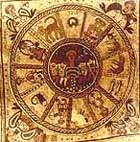 |
Beit Alfa Synagogue National Park (on Kibbutz Hefzibah) -The Valleys Mosaic of the zodiac and the story of the sacrifice of Isaac
The Beit Alfa synagogue was constructed in the fifth century C.E. It had a courtyard, an entryway, a large rectangular room, a second-floor balcony, and an additional room. Two inscriptions were found on the entryway floor. |
|
| 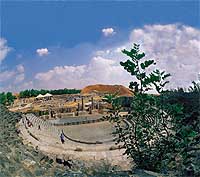 |
Beit She 'an National Park -The Valleys Israel's Pompeii
The settlement of Beit She'an began in the fifth century B.C.E. on a hilltop south of Nahal Harod, in the heart of a fertile area with plenty of water and at the crossroads of major thoroughfares. |
| 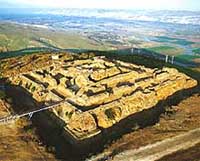 |
Cochav Hayarden National Park -The Valleys A Crusader fortress overlooking the Jordan Valley and Gilad Mountains
This park is on the eastern part of the Yissahar Ridge, on the edge of the steep slope overlooking the Jordan Valley. The builders of the fortress called it Belvoir (beautiful view) because of its magnificent view, which takes in the Gilad Mountains in Trans-Jordan. |
| 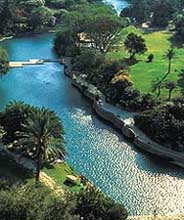 |
Gan Hashlosha National Park (Sahne) -The Valleys Springs, natural pools, and naturally warm water
The Amal River traverses the length of the Gan Hashlosha National Park. Since its water is 28 degrees centigrade summer and winter, visitors can swim in the river year-round. The water collects in a natural pool (later enlarged). |
|  |
Harod Spring National Park -The Valleys A spot of blue in the Jezre'el Valley
The Harod Spring bubbles in a cave on the slopes of Mount Gilboa. The clear water flows in a brook through the grassy Harod Spring National Park en route to its final destination: the Jezre'el Valley farms |
| 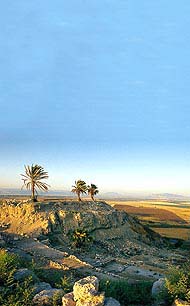 |
Tel Megiddo National Park -The Valleys Ahab's chariot city
In the early third millenium B.C.E., Megiddo was already a city fortified by enormous walls; a thousand years later Megiddo was one of the centers of the Egyptian rule in Canaan. The park offers a great deal to the visitor. A model of the archeological structure of the Tel.. |
|
|
| 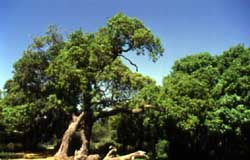 |
Mount Carmel National Park - Mt. Carmel A mountain that is green all year long
Although only one-third of the 21-acre Mount Carmel National Park is a nature reserve, the entire park is dedicated to nature conservation, and specifically to maintaining the Mediterranean habitats of Israel. |
| 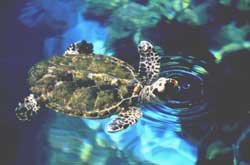 |
Alexander River National Park -The Coast & Tel Aviv A running river and a beautiful beach in one
The Alexander River is one of the few riverbeds on the coastal plain which has water all year long. It has a significant population of soft-shelled turtles, reptiles which can measure 1.20 meters and weigh 50 kilograms. |
| 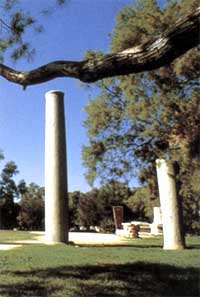 |
Ashkelon National Park -The Coast & Tel Aviv Old and new near the sea
The Ashkelon National Park sits within an ancient rampart. A trail at the foot of the Crusader wall of the city offers a lovely view of the park, the sand dunes south of Ashkelon, and present-day Ashkelon. |
| 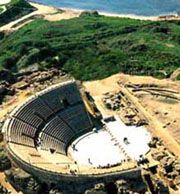 |
Caesarea National Park -The Coast & Tel Aviv Port city par excellence
This area has had a long and checkered history. It was initially settled during the Hellenistic period (third century B.C.E.), when the Phoenicians built a small port city that they named Straton's Tower. |
|  |
Sharon National Park -The Coast & Tel Aviv A place with everything: seashore, winter pools, remains of a park forest, and sand dunes
The 1500 acres of the Sharon National Park comprise a relatively large and uninterrupted slice of natural landscape, containing all the elements typical of the coastal plain. The park's green vista and open area separate the built-up Hadera area… |
| 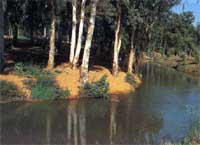 |
Yarkon National Park - The Coast & Tel Aviv A clean green vista in the Tel Aviv area
The park has two main attractions: Tel Afek and its Ottoman-period fortress, Binar Bashi, overlooking the springs of the Yarkon River; and the area around the sources of the Yarkon River, which boasts a wealth of flora and fauna. |
| 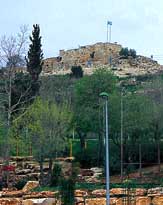 |
Castel National Park - Jerusalem Guarding the road to Jerusalem
Mount Castel rises 790 meters above sea level. Some historians identity this area with Efron, mentioned in the Bible as a city bordering on the lands belonging to the tribes of Judah and Benjamin (Joshua 15:9). |
| 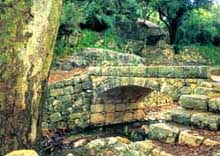 |
Ein Hemed National Park - Jerusalem A delightful place to visit in the Jerusalem corridor
The beautifully landscaped Ein Hemed National Park has rolling lawns, a bubbling brook (in the winter only), a large Crusader-period building, and picnic tables. This is without a doubt one of the loveliest spots in the Jerusalem area. |
| 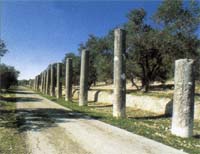 |
Shomron National Park - Jerusalem The ancient capital of the Israelite kingdom
The ruins of the Israelite city of Shomron are about twelve kilometers north of Nablus in the direction of Jenin, near the Arab village of Sebastya. Shomron was the capital of the Israelite kingdom during the eighth and ninth centuries B.C.E., and continued to be an important city… |
| 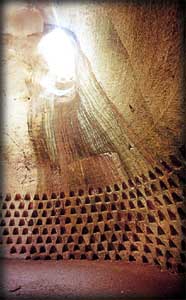 |
Beit Govrin National Park - Shfelat-Yehuda Land of 1000 caves
The 1,250-acre Beit Govrin National Park lies in the Judean plain, an area with rolling hills rising some 400 meters above sea level. Most of the ground here is chalky and this soft but relatively erosion-resistant stone is ideal for caves. |
|
| 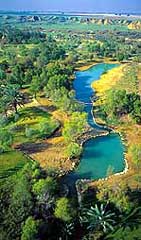 |
Eshkol National Park - Western Negev An oasis in the Negev Desert
The 875-acre Eshkol National Park has rolling lawns, picnic areas, a swimming pool, and a playground. It is the ideal spot for spending a day in natural surroundings or as the starting point for a visit to Nahal Besor and its spectacular scenic route. |
| 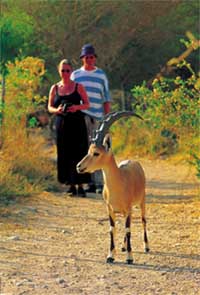 |
Ein Gedi Antiquities National Park - Judean Desert & Dead Sea Synagogue in an oasis
The remains of a Byzantine-period synagogue are on view at the Ein Gedi Antiquities National Park, adjacent to the Ein Gedi Nature Reserve and the Arugot River. Five inscriptions were discovered on the synagogue floor… |
|
| 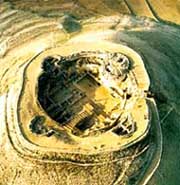 |
Herodion National Park - Judean Desert & Dead Sea Herod's well-fortified vacation palace
Herodion is without question one of the most fascinating structures from the ancient world. This fortress cum fortified castle outside of Bethlehem was built by King Herod between 22 and 15 B.C.E. |
|
| 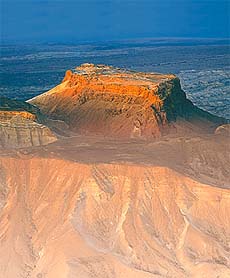 |
Massada National Park - Judean Desert & Dead Sea Herodian-period Massada
Sitting on an isolated cliff in the Judean Desert, Massada's steep slopes and precipices rise more than 400 meters above the Dead Sea. The combination of cliffs and escarpments in the desert area provided Massada with the perfect natural defense system |
|
| 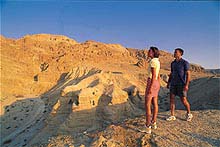 |
Qumran National Park - Judean Desert & Dead Sea Home to the authors of the Dead Sea Scrolls
The discovery of the ancient settlement of Qumran and the Dead Sea Scrolls was thrilling to Christians and Jews alike. The Dead Sea Scrolls had sat undisturbed deep in the caves of the Judean Desert for millennia |
|
| 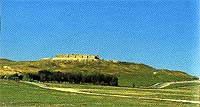 |
Tel Arad National Park -Judean Desert & Dead Sea Remnants of an important city from the Canaanite and Israelite periods
Tel Arad, on the outskirts of the modern city of Arad, has both a lower and an upper city. The lower city was inhabited only during the early Canaanite period (3150-2200 B.C.E.). At the time, the 250-acre Canaanite settlement with its 1,200-meter-long wall was one of the largest cities in Eretz Israel. |
| 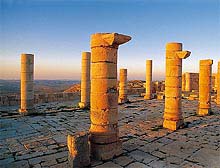 |
Avdat National Park - Central Negev Bridging the centuries
Avdat sits on the ancient Spice Route between Petra and Gaza. The city was named for the admired Nabatean monarch Avdat, apparently Avdat II (30-9 B.C.E.), who asked to be buried here. Most of the spectacular finds are from the acropolis, some 650 meters above sea level.. |
|
| 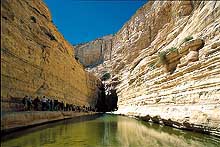 |
Ein Avdat National Park -Central Negev Oasis in a stunning canyon
The Ein Avdat Spring flows where the Zin River leaves the Avdat Plain. Here the river creates an unusual-looking, deep, narrow canyon in the soft white chalk. The park has a bubbling brook, a waterfall, and pools. |
|
| 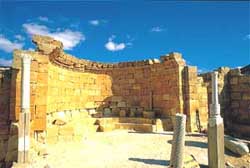 |
Mamshit National Park - Central Negev The Nabatean city where the Arabian horse was bred
Mamshit is the Nabatean city of Memphis. In the Nabatean period, Mamshit was important because it sat on the route from the Idumean Mountains to the Arava, which passed through Ma'ale Akrabim and continued on to Beersheva or to Hebron and Jerusalem. |
|
|  |
Shivta National Park - Central Negev A Nabatean and Christian city in the heart of the desert
Shivta differs from the other Nabatean cities in the Negev Desert in that it does not sit on any commerce route. The settlement was not fortified and therefore can be considered a large agricultural village. |
|
| 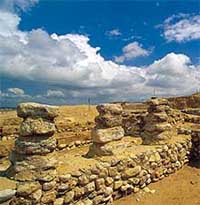 |
Tel Beersheva National Park - Central Negev A settlement from the time of Abraham
Tel Beersheva sits near the confluence of the Beersheva and Hebron Rivers, where settled land meets the desert. Archeologists working at Tel Beersheva uncovered two-thirds of a settlement from the early Israelite period (tenth century B.C.E.). |
|
| 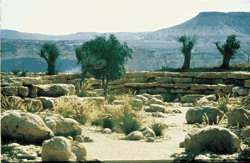 |
Prime Minister David Ben-Gurion's Grave - Central Negev The graves of David and Paula Ben-Gurion: a landscaped garden in the desert
Prime Minister David Ben-Gurion and his wife, Paula, are buried on the edge of a cliff overlooking the stunning landscape of the Zin Valley and the Avdat Plain. |
|
|
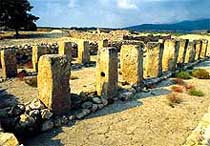 |
Tel Hazor - National parks - Upper Galilee Tel Hazor sits opposite Kibbutz Ayelet Hashahar on the Rosh Pina-Metulla road. The tell (mound composed of the remains of successive settlements) has two parts: the 30-acre acropolis and the 175-acre lower city. Hazor flourished during the middle Canaanite period (ca. 1750 B.C.E.) and was the largest fortified area in Eretz Israel during the Israelite period (ninth century B.C.E.) |
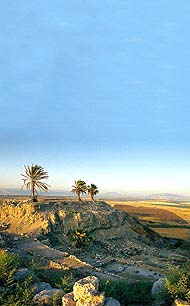 |
Tel Megido - National parks - Lower GalileeMegiddo was one of the centers of the Egyptian rule in Canaan. Megiddo was strategically invaluable: It overlooked the Eiron River in the heart of the ancient Via Maris, which led from Egypt and Damascus.
Egyptian monarch Thutmosis III traveled to Canaan in 1486 B.C.E. as a means of entrenching Egyptian rule in the area |
 |
Acre- Visitor Center - Western Galilee Acre is a historic walled port-city with continuous settlement from the Phoenician period. The present city is characteristic of a fortified town dating from the Ottoman 18th and 19th centuries, with typical urban components such as the citadel, mosques, khans and baths. The remains of the Crusader town, dating from 1104 to 1291, lie almost intact, both above and below today's street level, providing an exceptional picture of the layout and structures of the capital of the medieval Crusader kingdom of Jerusalem. |
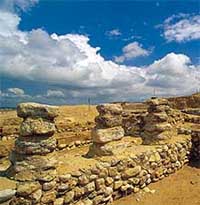 |
Beer Sheba National Park - Western Negev A settlement from the time of Abraham. Tel Beersheva sits near the confluence of the Beersheva and Hebron Rivers, where settled land meets the desert
|
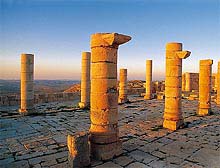 |
Avdat National Park - Western Negev Bridging the centuries. Avdat sits on the ancient Spice Route between Petra and Gaza. The city was named for the admired Nabatean monarch Avdat, apparently Avdat II (30-9 B.C.E.), who asked to be buried here. King Avdat renewed settlement in the city after Gaza's fall to the Hasmonean king Alexander Jannaeus (100 B.C.E.) and mass migration from the city had effectively taken Avdat off the commercial map. |
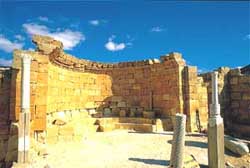 |
Mamshit National Park - Western Negev The Nabatean city where the Arabian horse was bred. Mamshit is the Nabatean city of Memphis. In the Nabatean period, Mamshit was important because it sat on the route from the Idumean Mountains to the Arava, which passed through Ma'ale Akrabim and continued on to Beersheva or to Hebron and Jerusalem |
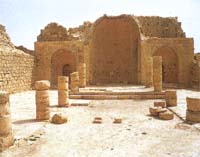 |
Shivta National Park - Western Negev A Nabatean and Christian city in the heart of the desert. Shivta differs from the other Nabatean cities in the Negev Desert in that it does not sit on any commerce route. The settlement was not fortified and therefore can be considered a large agricultural village. Shivta was founded during the early Roman period (first century B.C.E.) and Roman-period ruins are visible in the southern part of the city. |
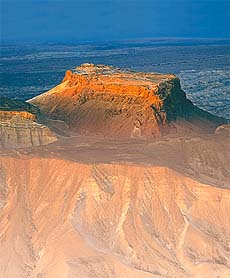 |
Masada National Park - Judean Desert & Dead Sea Masada is a rugged natural fortress, of majestic beauty, in the Judaean Desert overlooking the Dead Sea. It is a symbol of the ancient kingdom of Israel, its violent destruction and the last stand of Jewish patriots in the face of the Roman army, in 73 A.D. It was built as a palace complex, in the classic style of the early Roman Empire, by Herod the Great, King of Judaea, (reigned 37 – 4 B.C.). The camps, fortifications and attack ramp that encircle the monument constitute the most complete Roman siege works surviving to the present day |
|
|
|
|